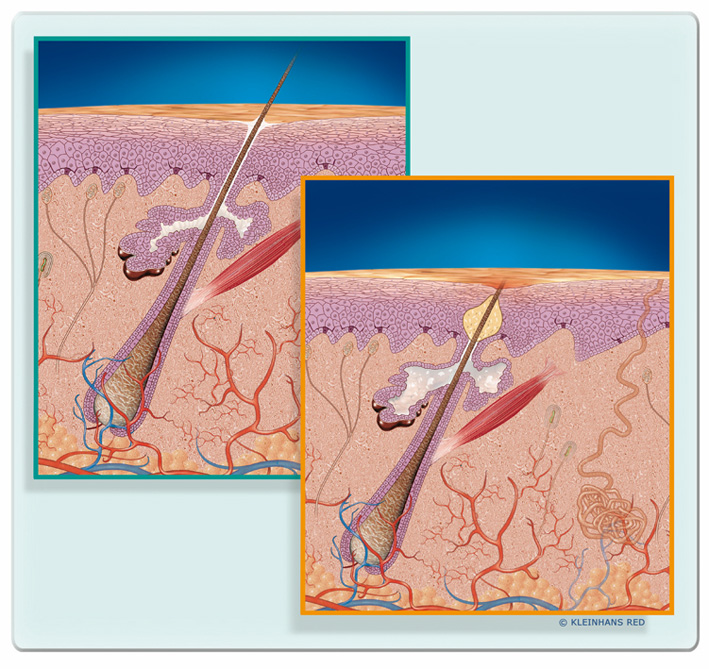Impure skin

Impure skin is the most frequent consecutive symptom of oily skin. Impure skin and acne are caused by an increasing production of skin lipids (sebum) and a hornification disorder on the skin's surface. Small horny plugs are formed which lead to a blockage of sebum and a dilation of the excretory ducts of the sebaceous gland. This gives rise to an oily complexion and comedones are formed in the inner part of the follicle.
Acne is an inflammation of the sebaceous glands and the hair follicles. A formation of nodules and cysts, and even papules and pus-forming pustules is observable on the skin of the face, neck, chest, back and shoulders. Hormones also play a special role in acne lesions. The skin grain may thus be negatively influenced by hormonal changes.
Our series of illustrations shows a schematic cross-section through the skin and sebaceous glands which are the sites of impure skin and acne lesions.The illustration on the left shows a cross-section of the skin (hair follicle and sebaceous gland), which is in its "normal" state. The saccular glandula sebacea hangs at the hair follicle and flows into the hair funnel. The secretory product of the sebaceous gland, sebum or lipid, films over the hair and surface of the stratum corneum and may spread up to the upper layers of it with a thin film.
The illustration on the right shows an increased production of sebum and a resulting blockage. This is caused by an impaired hornification, not only on the skin's surface but also in the excretory ducts of the sebaceous glands. Comedones are formed in the inner part of the follicle. As the openings become clogged, bacteria may easily grow and become infected. Due to ruptures in the follicle wall, the blocked sebum reaches the adjacent tissue and may lead to painful, pus-forming nodules and papules.
Source: Roche Lexikon Medizin (4th edition).
